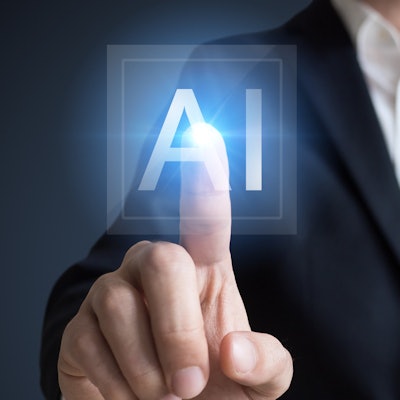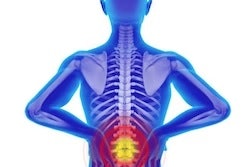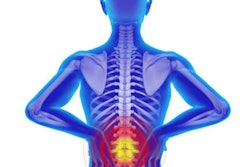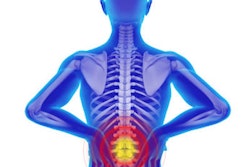
Patients at risk for osteoporotic fractures can be identified through their routine chest or abdomen CT scans thanks to an artificial intelligence (AI) algorithm tested in Israel, according to research published online January 13 in Nature Medicine.
In collaboration with AI software developer Zebra Medical Vision, a team of Israeli researchers developed a software tool that automatically calculates fracture risk scores based on three bone imaging biomarkers analyzed by deep-learning algorithms, as well as patient age and sex. They found that their CT-based risk stratification model predicted future major osteoporotic fractures and hip fractures at an accuracy comparable to the Fracture Risk Assessment Tool (FRAX) without data from bone mineral density (BMD) scans.
"When [FRAX without BMD] inputs are not available, the initial evaluation of fracture risk can be done completely automatically based on a single abdomen or chest CT, which is often available for screening candidates," wrote the authors, led by Dr. Noa Dagan of the Clalit Research Institute in Tel Aviv and Dr. Eldad Elnekave of Zebra.
Osteoporosis screening using dual-energy x-ray absorptiometry (DEXA) or risk predictors such as FRAX remains markedly underutilized, according to the researchers.
"An automated process for evaluating fracture risk based on existing or newly acquired CT scans can help in fracture risk evaluation among individuals that undergo such CT scans and opens possibilities for earlier interventions," the authors wrote.
To create their CT-based risk predictor, the researchers utilized deep-learning algorithms that were trained by Zebra to generate three bone imaging markers:
- Vertebral compression fractures (VCF)
- Simulated DEXA T-scores
- Lumbar trabecular density
The predictor also incorporates patient age and sex from the CT metadata.
The algorithm was tested on 55,527 patients ages 50 to 90 treated at Clalit Health Services and who had an available chest or abdomen CT before July 1, 2012. The researchers found that the algorithms could produce the two mandatory bone imaging biomarkers (VCF and the simulated DEXA T-score) in 83.6% of the cases.
The researchers then compared the tool's performance on these remaining 48,227 cases with that of the FRAX risk predictor without BMD, as well as a combination of FRAX and the AI algorithm. Of these 48,227 subjects, 5,106 (10.6%) had a major osteoporotic fracture (hip, vertebral, proximal humerus, or distal radial fractures) and 1,901 (3.9%) had a hip fracture before June 31, 2017.
| Performance of prediction tools for major fractures | |||
| FRAX prediction tool without BMD | CT-based prediction tool with AI | Combined prediction tool | |
| Area under the curve (AUC) for major osteoporotic fracture | 0.691 | 0.709 | 0.723 |
| AUC for hip fracture | 0.751 | 0.76 | 0.772 |
The CT-based risk stratification tool was statistically superior to FRAX without BMD for major osteoporotic fractures and statistically noninferior for hip fractures, according to the researchers.
"We further showed that if the inputs of [FRAX without BMD] are available, the addition of the CT bone imaging biomarkers can produce statistically better discrimination for both outcomes."




















